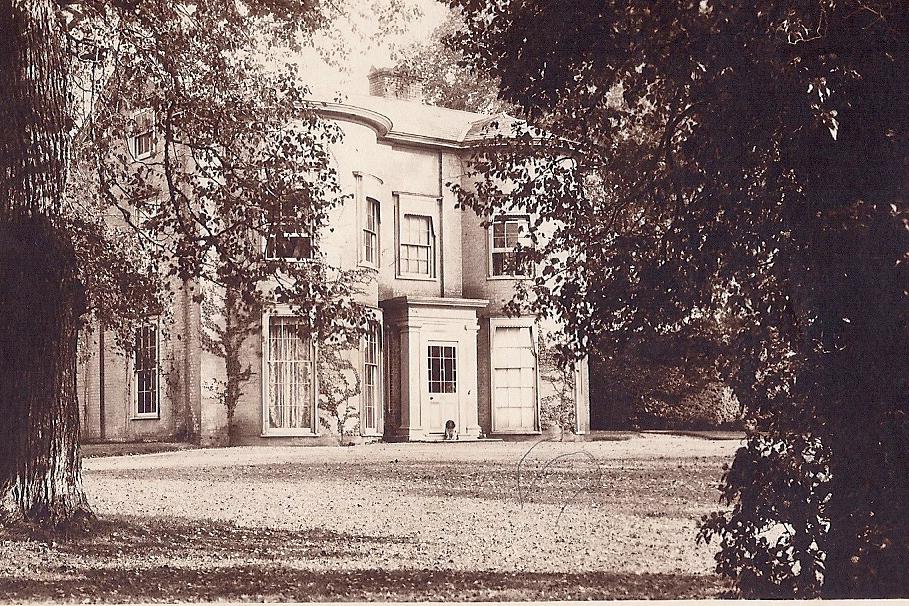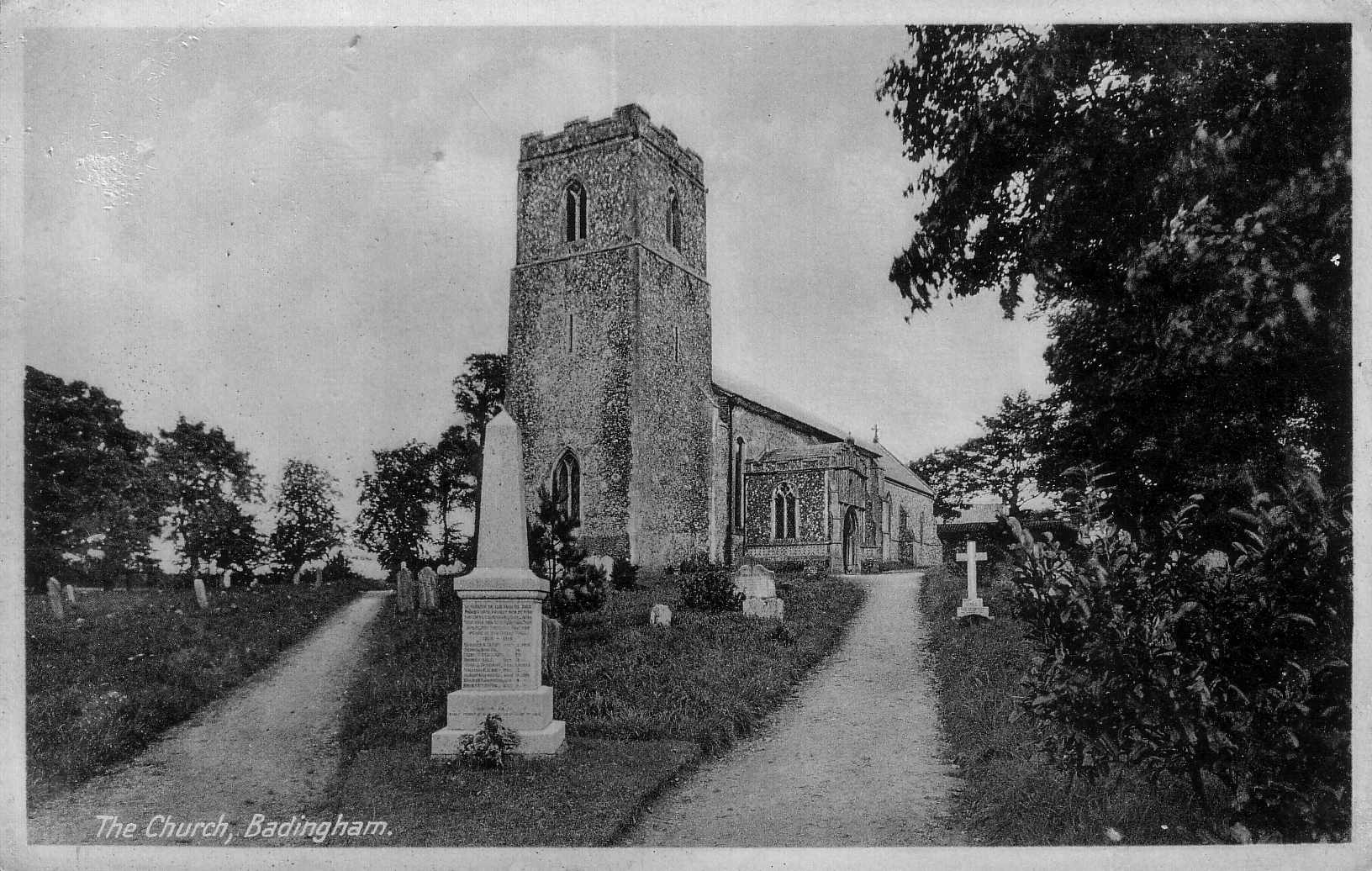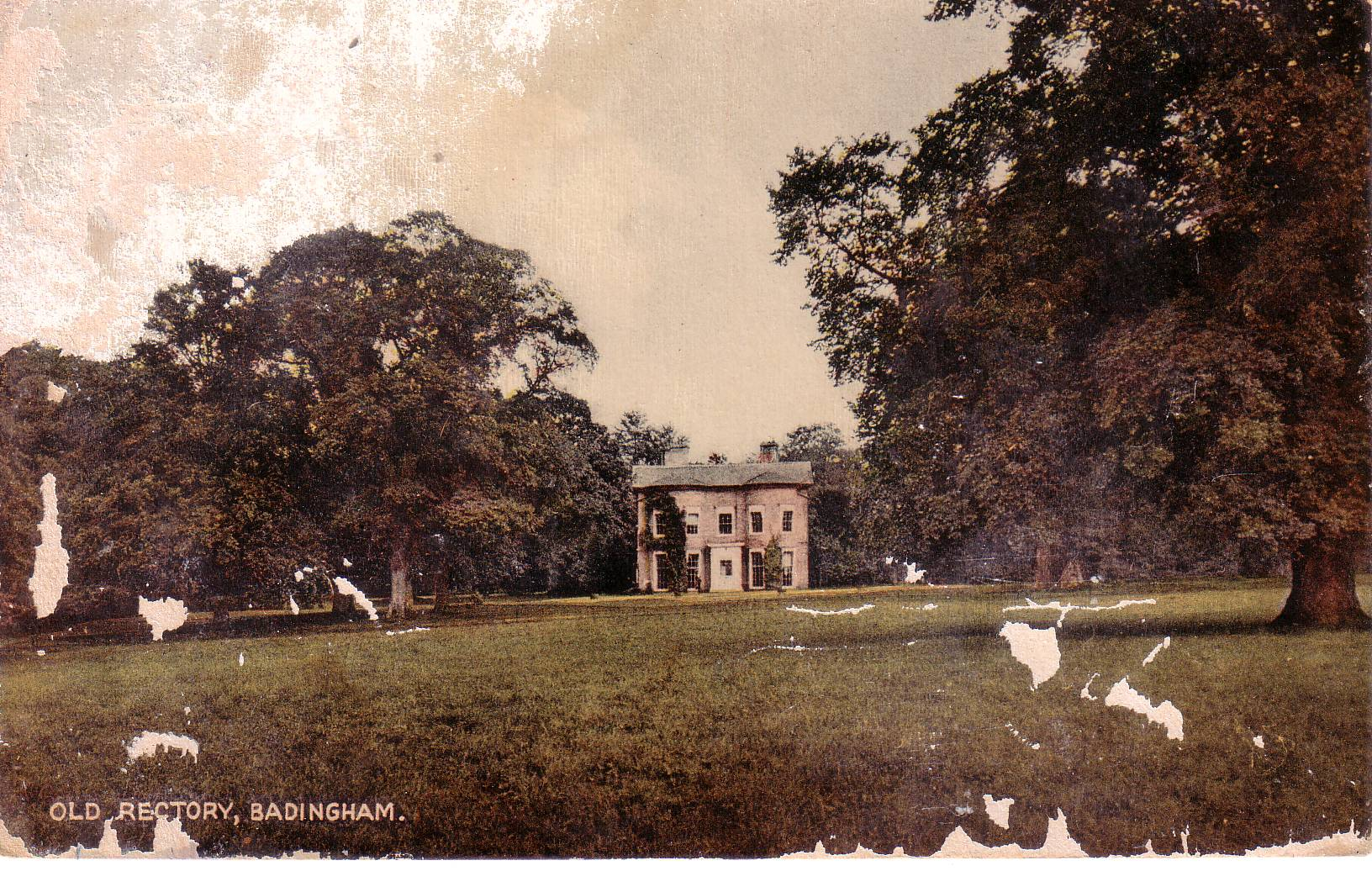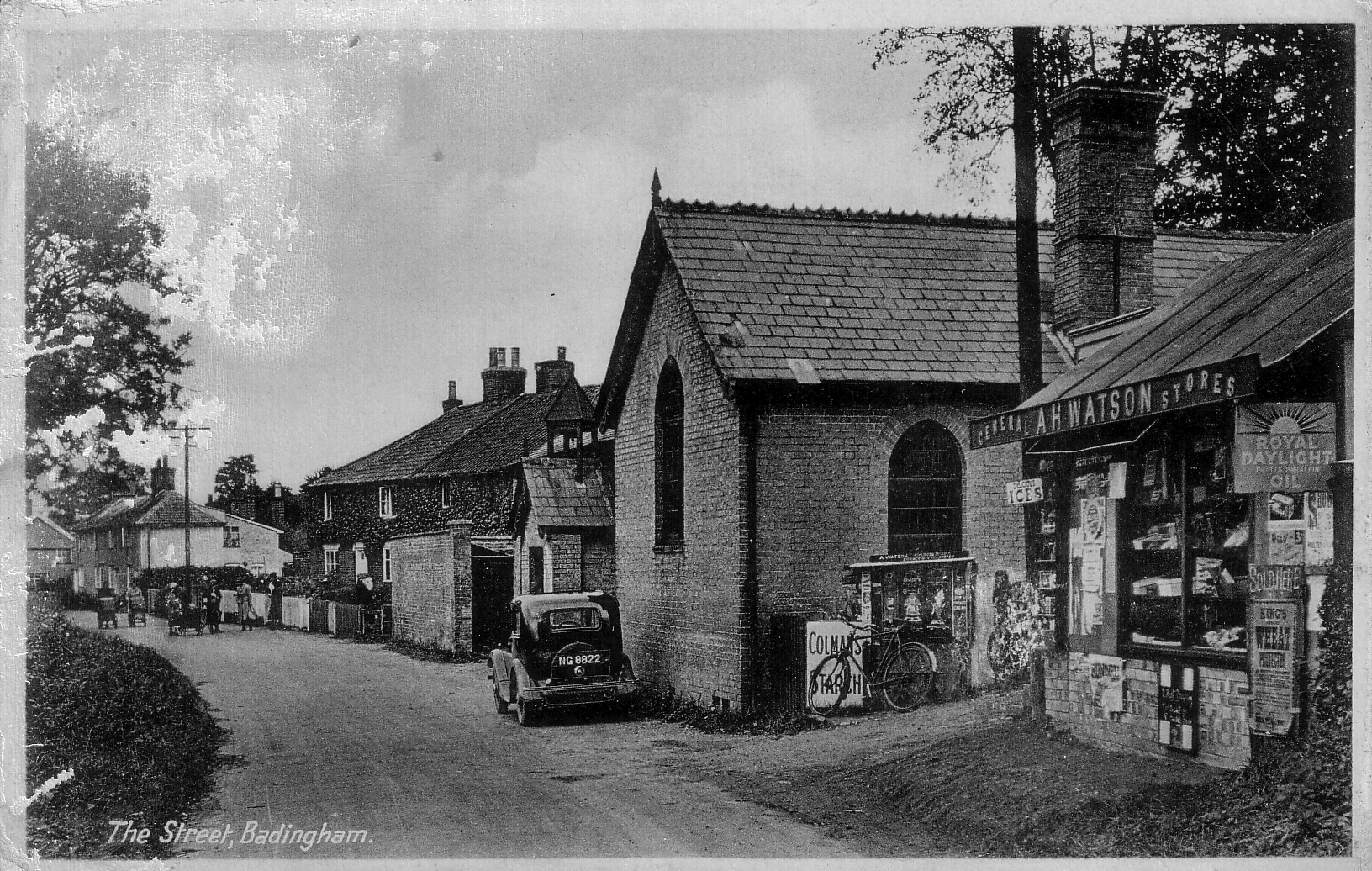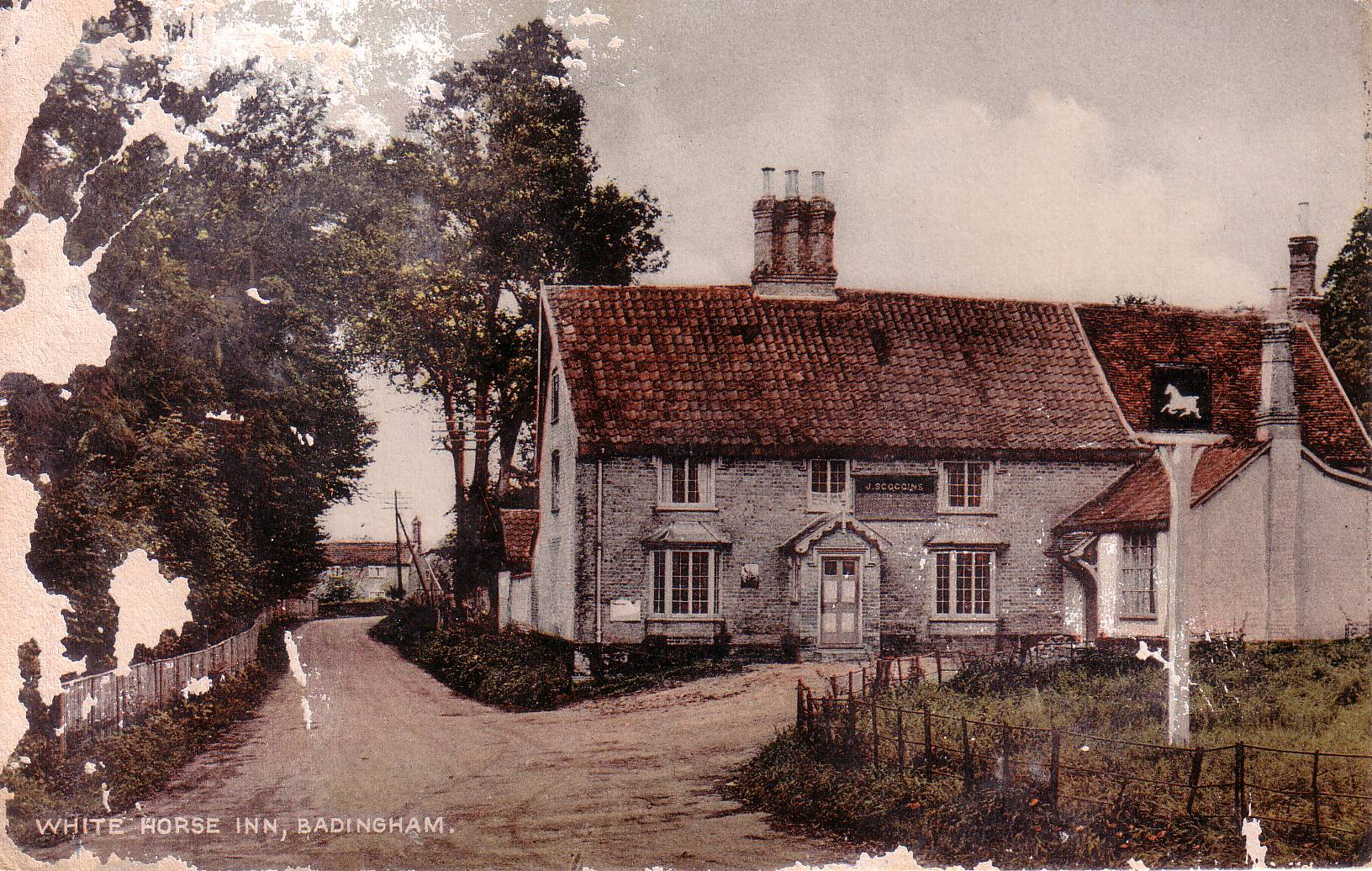The village of Badingham lies in the beautiful Alde Valley in rural High Suffolk.
It is close to the A1120 tourist route from Stowmarket to Yoxford. It is ten miles from the sea, three miles from the historic town of Framlingham, twenty-five miles from Ipswich to the south and forty miles from the City of Norwich to the north.
The parish is one of the largest in area within Suffolk Coastal District Council, and extends to more than eleven square miles. The neighbouring parishes are Dennington, Laxfield, Peasenhall, Bruisyard and Cransford.
Most land is used for arable farming and pasture. Part of the Shawsgate vineyard is within the parish.
Badingham is situated close to the source of the River Alde. In bygone years the river was navigable by small punt-like boats all the way to the sea.
Fords across the river would have maintained a water level throughout the year. The clay soil of the uplands would have been forested with oak trees until the Saxon period. Habitation prior to the Roman period would have been on the banks of the Alde and the stream that flows from the North past the site of the Church.
The Church stands on a spur of high ground. This was called Burstonhaugh and may have been a holy place since earliest times. Its link with pagan celebrations on midsummer`s day may have been one reason why a church was built there, oriented so that the sun shone down its length as it rose on that day.
The route of a Roman road between the neighbouring parish of Peasenhall and that of Coddenham (Combretovium) passes through Badingham and there are remains of a Roman villa to the south of the road, beside the Alde.
This route would have been used to carry merchandise to and from the harbour at Dunwich for the 300 years or so that the Romans controlled the country. Such a road would have kept a gang of workers employed on its maintenance. As Roman funds dried up, it fell into disrepair and spoil from it was used for building elsewhere.
The period between the Roman departure and the arrival of Saxons from across the North Sea would have been quiet with local leadership of a sparse population. Hence, when the sons of a man called Bada arrived and made their way up-river, they were free to settle and build “halls” for themselves, one either side of the Alde and one at the source of the river Yox, a mile or so, over the hill to the east.
Christian missionaries converted the descendents of Bada and dedicated the church they built to St John the Baptist.
The Saxons took up residence over all East Anglia forming a kingdom with lords taking possession of large tracts of land. In Badingham, areas of forest were cleared for meadows and fields.
When the Normans took control of the county, Edric of Laxfield was in possession of the lands of Badingham and surrounding villages, but he lost them to another Norman, William Malet, whose supporters took over the halls and hovels, the occupants being turned out to become subservient to the new Norman masters. This was probably not a happy time for the folk of Badingham.
With the new masters came new government and Norman families were the ruling class for many generations. The church shows that there was wealth to spare. A chancel was added and the height of the roof and tower were raised.
By Tudor times, the Rous family at Badingham Hall, Derehaugh at Colston Hall and Cornwallis at Okenhill Hall were the local lords. Kilns at Dennington provided bricks to build and restore the halls and houses. Okenhill Hall received its prominent stepped gable end and chimney in 1552. Most of the forest had gone by then and the land was under cultivation. Some of the Tudor fields exist today.
After the turmoil of Oliver Cromwell`s Commonwealth the country halls were no longer homes for their wealthy owners but were tenanted out to farming yeomen. Badingham Hall fell into disrepair and was replaced by a farmhouse, now demolished. Only the moat and some brickwork remain to mark its passing.
Colston Hall was probably rebuilt as a farmhouse at a similar time but has stood the test of time. A much-repaired Okenhill Hall still dominates the western bank of the Alde where, two thousand years ago, a Roman settlement and an important villa stood.

